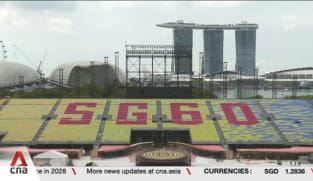NTU scientists develop 3D concrete printing method that traps carbon dioxide to reduce emissions
A new way to 3D print concrete can absorb and trap nearly 40% more carbon dioxide than traditional 3D printing methods. It's among ways scientists are exploring to decarbonise cement manufacturing — an industry that's responsible for 8% of the world's carbon emissions. The new process injects steam and carbon dioxide into the concrete mix, directly storing CO2 in the printed structure. Nanyang Technological University researchers said this is also stronger and more durable than regular 3D-printed concrete. Professor Tan Ming Jen from NTU's School of Mechanical and Aerospace Engineering and the Singapore Centre for 3D Printing shared more about the process.
A new way to 3D print concrete can absorb and trap nearly 40% more carbon dioxide than traditional 3D printing methods. It's among ways scientists are exploring to decarbonise cement manufacturing — an industry that's responsible for 8% of the world's carbon emissions. The new process injects steam and carbon dioxide into the concrete mix, directly storing CO2 in the printed structure. Nanyang Technological University researchers said this is also stronger and more durable than regular 3D-printed concrete. Professor Tan Ming Jen from NTU's School of Mechanical and Aerospace Engineering and the Singapore Centre for 3D Printing shared more about the process.




















